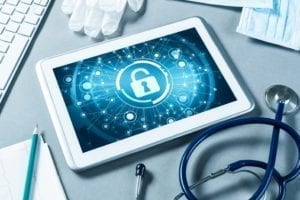 The following is a guest article by Alexander Chiu, MD at Telemedicine911.
The following is a guest article by Alexander Chiu, MD at Telemedicine911.
The COVID-19 pandemic brought a quick pivot to telehealth, where patients in any location can connect with a provider from any location. The rapid adoption of telehealth and virtual provider brought light to the following question – What happens during a telehealth visit if the provider recognizes that the patient needs urgent help due to an emergent situation?
Telling a patient to “hang up and call 911” or “hang up and go to the ER” is like telling a person who just walked into the provider’s office to leave and go somewhere else to get help.
Nearly 600,000 calls are made to 911 each day in the U.S. It’s interesting to note that the 911 system is not a national system. There are nearly 6,000 individual PSAPs (public safety answering points) and 3,000 county 911 centers that manage the calls. These PSAPs and county call centers aren’t connected, meaning they can’t handle calls for other 911 districts. If a call comes into their call center requesting help for someone outside that PSAP or county, the system isn’t able to seamlessly transfer the caller to the appropriate PSAP or county 911 center.
We’ve known this has been an issue for years but the 911 infrastructure, which was developed more than 40 years ago, is an antiquated, disjointed system with many limitations. One of the most prevalent now is the system’s inability to locate an individual unless the person is calling from a landline phone. And the majority of households now use cellphones as their primary home phone.
This brings us back to our initial question, and there are multiple issues in this scenario. If the patient is calling into the appointment via a cellphone, they may not be located in the same dispatch location as the provider. In this case, the provider isn’t able to just dial 911 to get help to the patient. If the patient is incapacitated and is unaware of his or her location, the provider has no way of knowing where to send an EMS team, even if the patient is located within the provider’s PSAP.
If the provider does know the patient’s address and it’s in a different PSAP, the traditional approach is to conduct an “ambulance scramble.” This is where the provider or staff comb the internet looking for an ambulance company that serves the area where the patient is located. This process takes precious time that could delay care getting to the patient. But that’s only if the provider even knows the patient’s address. What happens if they don’t?
A New Approach
Fortunately, technology now exists that can mitigate the challenges of the current 911 system and provide a more seamless transition of care. This is good news for health systems and providers who offer telemedicine services. Through a web-based platform and Air®GeoLocate technology, this new solution enables providers to seamlessly hand the patient off to the appropriate EMS provider no matter where the patient is located.
How it Works
If a provider recognizes that a patient needs emergency care during a telehealth appointment, she can connect to the emergency platform, enter the patient’s information along with additional notes that may be helpful for the emergency responders. If the patient’s address is known, the provider can just enter it into the system. If the patient’s location is not known, the Air®GeoLocate feature is able to find the patient and automatically enter the information into the system.
Once all patient information is entered, the call is automatically connected to the 911 dispatcher in the patient’s PSAP. Because the web-based platform is integrated into a PSAP’s existing 911 software, the dispatcher will see the patient’s information on their screen. This enables the dispatcher to quickly deploy the right EMS team to the right location.
Success Story
During a telehealth appointment with her psychiatrist, a patient said she was going to kill herself. The psychiatrist told the patient she needed to hang up and immediately call 911. The patient hung up but did not make the call. A few days later the patient called her psychologist saying she was going to kill herself. Again the patient was told to hang up and call 911 to get immediate help. The patient hung up and, once again, did not make the call.
The following week, the patient swallowed an entire bottle of hydroxyzine pills. A few minutes later she called her primary care telehealth provider and said that she had “done something stupid.” While the patient lived in her provider’s county, she was in a different location on that particular day, many hours south of her home. The patient’s primary care provider had implemented an emergency technology solution for telehealth and was able to activate 911 in PSAP where the patient was located. The patient had become altered to the point she was unable to open the front door, which the provider conveyed to the police and EMS team. Instead of waiting for the patient to answer the door, they found an alternate way to enter the building. They were able to get to the patient in time and get her to a facility where she got the urgent care she needed.
Next Generation 911 for Telemedicine is Here Today
When an emergency happens during a telemedicine event, the provider’s office can become chaotic. Doing the ambulance scramble and calling the wrong 911 dispatch takes up critical time that could put the patient’s life at risk. Telemedine911 can help.
Telemedicine911 is a plug-and-play solution designed for emergencies that happen during telehealth visits. Providers can connect to the cloud-based platform through any web-enabled device from any location. Because the system is a single sign-on solution, it seamlessly integrates with a provider’s systems—always connected and ready at a moment’s notice.
There’s no need to put telehealth patients at risk.













